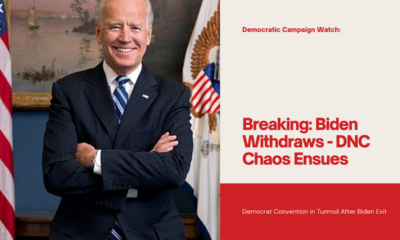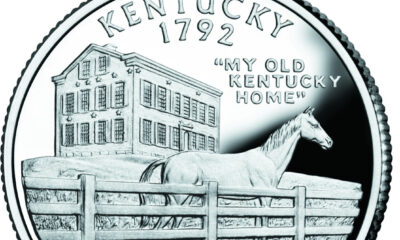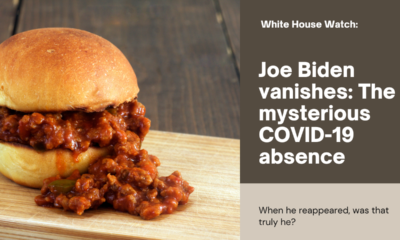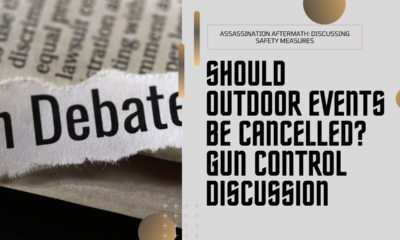Education
Affirmative action dies – and high time
The U.S. Supreme Court yesterday ended the affirmative action regime of 45 years. The dissents and protests speak volumes.
Yesterday morning, at the United States Supreme Court, affirmative action, as the country has known it for decades, died. So everyone agrees (although some, including at least two Justices of the Supreme Court, urge certain parties to keep it going, if surreptitiously). This result would have surprised anyone who grew up in the 1960s, except that the oral argument session of the two major affirmative action cases almost certainly told the country how the Court would decide. Now that we have the result, people (on and off the Court) are renewing some dire predictions. In fact, predictions of a “re-segregated” society have no basis in actual fact. Furthermore, those who make such predictions, prove the points the Court made in saying affirmative action had to go.
What is, or was, affirmative action?
Affirmative action means preferring non-whites to white, women to men, or … well, “let us close the curtain of charity.” It has another, uglier name: reverse discrimination. As such it has its basis in what Justice Clarence Thomas called today an “antisubordination” view of the law. “Antisubordination” law and jurisprudence deem it acceptable to discriminate against that group that the faction in power has convicted of once subordinating all other groups. The “subordinators” are white heterosexual males who never opted to change their phenotype to be opposite of their genotype. (Or to be more accurate, chromosomal type.) Thus affirmative action derives from critical theory in all its forms.
The phrase started to gain currency in the late 1960s and through the 1970s, concurrent with a largelyh judicial policy. That policy was desegregation busing, which the Supreme Court upheld in Swann v. Charlotte-Mecklenberg Bd. Ed., 402 U.S. 1 (1971). That was a well-meant program that went wrong, resulting in whites fleeing from major cities to escape the jurisdiction of federal courts handing down orders similar to Swann. The federal courts abandoned that policy beginning in 1975, after Dr. James Coleman, the best recognized expert witness on the subject, conceded its failure.
When one examines affirmative action in this light, one can see it only as punishment of one group above all. Beginning in 1978 the Court started to back off from its antisubordinarion jurisprudence, ever so slightly.
Two major cases before the current cases
The first such backing-away case was Regents of the University of California v. Allan Paul Bakke, 438 U.S. 265 (1978). Justice Lewis F. Powell delivered an opinion of which four of his colleagues joined in one part – and the other four in the other part. For that reason, Powell’s opinion is the controlling one. Powell left one “compelling interest” valid for “creating a diverse student body”: that a diversity of classmates enhanced the educational experience of all students. At the same time he rejected out-of-hand any rigid quota system for admissions in higher education. But universities could continue to use race as a factor in deciding whom to admit. (The University of California Medical School in Davis, California, admitted Allan Paul Bakke, who became an anesthesiologist.)
The next case, Grutter v. Bollinger 539 U.S. 306 (2003), continued the Bakke legacy. Barbara Grutter applied for law school, didn’t get in, sued, and lost. She couldn’t prove that the University of Michigan Law School shut her out for being white.
Two things happened after that, to ensure that affirmative action would die. First, the composition of the Supreme Court changed – radically. Two sets of replacements – John Paul Stevens with Samuel A. Alito, and Ruth Bader Ginsburg with Amy Coney Barrett – changed the balance of the Court.
Second, the elites who decide on punishments of certain groups either decided, or allowed their puppets to decide, to punish another group in addition to whites. That proved their fatal mistake.
Students for Fair Admissions
That second group now suffering the punishment of reverse discrimination were Asian Americans. Historically the groups that push their members to excel, always come in for the lopping treatment. According to Roman legend, Tarquin the Proud demonstrated the principle by lopping off the tallest poppies in a field. “Go and do likewise,” he said to a subordinate, who then executed the ablest members of a recently conquered people. (Ironically, the phrase lop list made it into the Opinion of the Court that came out yesterday.)
So several Asian Americans, mainly at the University of North Carolina, formed Students for Fair Admissions in 2014. Their mission: “to defend human and civil rights secured by law, including the right of individuals to equal protection under the law.” In November of 2014, SFFA separately sued Harvard College and the University of North Carolina. They sued:
- Harvard under Title VI of the Civil Rights Act of 1964, and
- UNC under the Equal Protection Clause of the Fourteenth Amendment.
District Courts in the First (Massachusetts) and Fourth (North Carolina) Judicial Circuits upheld the admissions policies at Harvard and UNC. The Supreme Court granted review after the First Circuit affirmed its respective District Court. Then the Supremes granted review in the North Carolina case even before the judgment came down. Justice Ketanji Brown Jackson recused herself from the Harvard case by reason of her prior association with Harvard University.
The vote against affirmative action
The vote came down as CNAV predicted after the Court heard oral argument: 6-3 (UNC) and 6-2 (Harvard). Chief Justice John Roberts wrote the opinion, and Justices Alito, Barrett, Neil Gorsuch, Brett Kavanaugh, and Clarence Thomas joined him. Justices Elena Kagan and Sonia Sotomayor voted against in both cases, with Justice Jackson voting against in UNC only.
The opinion first dwells heavily on the question of standing. UNC challenged SFFA’s standing, trying to allege that they were not a true membership organization. As Roberts frostily observed, every lower court that heard UNC’s reasoning rejected it – “and so do we.” SFFA is a membership organization, and it also represents the interest of anyone who loses out to affirmative action.
Then Roberts gets to the merits. In forty pages, he shows that the admissions policies at Harvard and UNC violate Title VI and the Equal Protection Clause. Roberts begins by reviewing the Court’s racial jurisprudence since passage of the Fourteenth Amendment – warts and all. The worst wart is, of course, Plessy v. Ferguson, 163 U.S. 537 (1896), with the lone dissent of one of the most remarkable Justices ever – John Marshall Harlan (1833-1911), who came to the Court in 1877. (One should not confuse him with his grandson, John Marshall Harlan II, 1899-1971, who came to the court in 1955.) Homer Plessy, of mixed race, broke a Jim Crow law in Louisiana, and what he got was not justice. Not according to Justice Harlan, whom the opinion, concurrences, and dissents quote extensively.
Another case corrects the error
From there Roberts proceeds, though several fruitless intermediate cases, to Brown v. Board of Education of Topeka, 347 U. S. 483, 491 (1954), which ended the “separate but equal” doctrine. That case used the Equal Protection Clause of the Fourteenth Amendment to end de jure segregation. Remarkably, the Court had to make the point again a year later, before the same Parties. Brown v. Board of Education of Topeka, 349 U.S. 294 (1955). By then, Harlan the grandson had joined the Court, and would remain on it until his death in 1971. (This second case ordered schools to start desegregating themselves “with all deliberate speed.” The busing controversy would not begin until the next decade.)
After that came case after case dismantling the segregation regime. All relied on the Equal Protection Clause. But affirmative action became a sticking point. Beginning with Bakke and especially with Grutter, the Court sought two requirements for racial classifications. They are a compelling government interest and narrow tailoring to achieve it.
The only compelling interest the Court has ever recognized is achieving a diverse student body. The Court has held such diversity to benefit its members. Such was Justice Powell’s contribution, which remained controlling from 1978 (Bakke) to now. But the Grutter case added one more requirement: this had to end someday. Justice Sandra Day O’Connor, in Grutter, set that limit: twenty-five years.
It has been 25 years since Justice Powell first approved the use of race to further an interest in student body diversity in the context of public higher education. … We expect that 25 years from now, the use of racial preferences will no longer be necessary to further the interest approved today.
Affirmative action ends now
The problem, for Chief Justice Roberts and the Justices who joined him, was: no end was in sight. Neither Harvard nor the University of North Carolina set any limit on the use of race in admissions. Not only that, but the two schools’ admissions policies do not satisfy strict scrutiny. And for the first time, the Court recognizes – which it seems never to have recognized before – the punishment of whites (and now Asians) for not being members of favored races. Roberts raised two objections:
- The goals the schools say they have, are not judicially measurable,
- The means to those goals seem to have little or no connection to the goals themselves.
Harvard and UNC make much of the “representation” of various races. As CNAV pointed out before, no student ever represents anyone but himself. Roberts might not recognize that, but he does recognize something else. Namely that “representation” is a poor measure of diversity, and seeking it inevitably punishes some students for their academic success.
Your editor, a student at Yale while Bakke was in oral argument and then “submitted,” heard a consistent refrain from classmates advocating affirmative action. “Don’t worry,” they would say; “you’re too smart to get cut.” Flattery aside, they had no answer to the question of what was supposed to happen to Allan Paul Bakke. Which was the worst part of their argument: to them: they regarded Bakke as a necessary sacrifice. In offering others some empty “immunity” from such sacrifice, they’d already lost.
A definite punishment
Roberts definitely found that race became grounds for punishing some students to benefit others. He cited statistics from the holding by the First Circuit Court of Appeals. Asian-Americans now represented 11.1 percent less of Harvard’s entering classes. This should have surprised no one, and Roberts states the obvious: “college admissions are zero-sum.” Alito made that precise point at oral argument, as regular readers will recall. SFFA was pleading on behalf of those who lost this zero-sum game, and Roberts finds their case far more compelling.
Worse than punishing some for no reason is actually perpetuating a stereotype. And here Roberts touches on what is fundamentally wrong with identity politics. These admission officers assume that members of any given race act and think alike. Politicians – especially Democrats – do that all the time these days. The Court, says Roberts, will allow that no longer. He finds such treatment “demeaning” of the “dignity and worth” of individuals. Now we see the essence of Roberts’ condemnation of affirmative action – its monumental disrespect for the individual.
He also returned to another theme the country heard at oral argument. When does this end? Alito asked that at oral argument, and Harvard and UNC brazenly argued back that affirmative action need never end. Clearly Roberts never forgot that. How could he, since Harvard always strove to achieve the same racial distribution, or close to it, in succeeding classes?
No more, says Roberts. This ends now – and the Court will accept no more excuses.
The dissents plump for affirmative action as identity politics
One may appropriately take up the dissents now, to make sense of further analysis of the opinion and the concurrences. Sonia Sotomayor and (in the UNC case) Ketanji Brown Jackson both plump for continued identity politicking. They lay great stress on “societal discrimination,” thus echoing the public refrain of all “critical theorists.” Which is that “systemic racism” pervades our society – so only racism in reverse can remedy that. And of course they’d never call it that! Because one thing stands out above all: “racist” is identical to “white.” Except that in these two cases, “racist” becomes identical to “Asian” also. So, though neither opinion nor concurrence makes this point, we’re back to Tarquin the Proud cutting off tall poppy heads. And neither Sotomayor nor Jackson see the irony, nor even make any effort to look for it.
Roberts condemns his colleagues for defending “a judiciary that picks winners and losers based on the color of their skin.” Thomas, in his concurrence, gives an apparent motive by introducing the term antisubordination. That is Thomas’ way of describing identity politics, to say nothing of critical theory and its practice. He reserves his special ire for Justice Jackson and her talk of “level … playing field[s].” (Sotomayor uses that expression once. She says she’s defending the remedy in the second Brown case, but what she’s actually defending is desegregation busing, as in Swann, or the continued punishment of the successful that is the essence of affirmative action.)
But whites have all the advantages!
Neither Roberts nor Thomas misrepresent the dissents in any way. In defending what they call “precedent,” they often misread the very precedents they claim to defend. That’s because they’re not defending any points of law at all, but a result. This has been a consistent part of their jurisprudence, especially in dissents in cases like Dobbs v. Jackson Women’s, New York State Rifle and Pistol Assn. v. Bruen, and Kennedy v. Bremerton School District. They (like Elena Kagan, who joined their dissents, and Breyer before Jackson) treat the Supreme Court as an equity court. Nothing matters to them, but results, results, results.
So when Sonia Sotomayor accuses the Court of “roll[ing] back decades of precedent and momentous progress,” she’s lying. Worse, in asserting “progress” she hints at a goal she dares not name. And when Jackson accuses the Court of “obstruct[ing] our collective progress toward the full realization of [the] promise [of the Equal Protection Clause], she clearly discards the actual promise in favor of another.
And what do Jackson and Sotomayor want? Redistribution of wealth! “Gulf-sized race-based gaps exist with respect to the health, wealth, and well-being of American citizens,” Jackson begins. Then she cites these gaps as evidence that Americans are not equal.For that she blames whites, and decrees that whites must suffer. Again she forgets: these petitioners are Asians – or does she? Could she have decided that “Asian” is now a subset of “white”?
Did someone misread the Court’s motto?
Someone needed to make sure Justice Jackson read the motto chiseled into the concrete on the Court’s main portico. “Equal justice under law,” it reads. Not “equal resources.” Not “equal portions in the cafeteria, nor equal dormitory beds to sleep in.” Equal justice under law.
Jackson especially makes much of the average net worth of whites (there’s that flawed distinction again) and blacks. As her colleagues take pains to point, out, that doesn’t matter, nor should it. To mention that at all is to signal that she’s waiting for a case that will let her support confiscating all material wealth, and doling this out as she sees fit.
The benefits, such as they are, of race-based college admissions can never be “universal,” as she calls them. Someone must suffer – and she says to the petitioners: “Suffer! Bear the punishment you so richly deserve!” She might as well tell them, “To a gas chamber – go!” As Whittaker Chambers famously accused the late Ayn Rand of telling her villain classes in Atlas Shrugged.
Other concurrences further condemn affirmative action
Besides Clarence Thomas, Neil Gorsuch and Brett Kavanaugh each wrote concurring opinions. Gorsuch, for his part, concentrated on Title VI. To him, the Court has for too long ignored Title VI and its own prohibitions against anything like affirmative action. “Both schools routinely discriminate on the basis of race when choosing new students – exactly what the law forbids,” he says. Tellingly, he does not suggest that Title VI conflicts with the Equal Protection Clause. So he accepts it as fully Constitutional and in accord with that Clause. This especially applies to Harvard, which is a private institution.
Kavanaugh further defends the Court’s precedents as following from the Equal Protection Clause – and not meaning what Sotomayor and Jackson seem to think they mean. He especially defended the 25-year limit Grutter set. Not only the opinion but two concurrences and even the dissent referred to that limit. In contrast, of course, Harvard and UNC regarded that limit as aspirational. (So does Sotomayor in her dissent. And again, the only thing to which she, Jackson, and Kagan seem to aspire is equality of result.)
Outside reactions
The New York Times had a surprisingly measured response to the ruling. German Lopez, writing in the Times’ morning newsletter today, said Democrats will have trouble rallying the troops behind affirmative action. The reason: most Americans don’t want it anymore – which he acknowledged immediately after oral argument. Lopez also suggested that Court members voted according to the effect they felt mattered more. The dissenters saw benefits to favored races; the majority saw punishment of the less-favored. Last, he said not to worry – the University of California system seems to achieve the stated goals without explicit race-norming. (He also said this shouldn’t affect the bulk of college applicants, except those applying to elite schools.)
The political left went crazy, also as Lopez seemed to observe. President Biden mumbled, “This is not a normal Court,” before shuffling away. That was the tamest reaction, and only his infirmity can explain that tameness.
Whoopi Goldberg, appearing on The View, apoplectically called the ruling “a slap in the face.” She singled out Justice Thomas for special criticism:
She further criticized Edward Blum, founder of SFFA, and Abigail Fisher, whose Texas case bore repeated mention in the opinions. (Reuters carried this retrospective on voices for and against affirmative action yesterday afternoon.) “Why do you fear us?” she cried. But then she said affirmative action would not be necessary “if everyone was actually treated equally.” Thus she inferred unequal treatment from unequal results. Tarquin the Proud again.
Other reactions, pro and con
“A dark day for America,” said Vice-President Kamala Harris. “A dagger in our back,” cried Al Sharpton. “Giant roadblock in our country’s march for racial justice,” said Sen. Charles Schumer (D-N.Y.) And Barack Obama feared loss of educational opportunities for “minorities.”
Donald Trump hailed the ruling for signaling a return to “merit-based” action. Other reactions show here:
If the Times’ German Lopez is correct, then those Democrats have hurt themselves and won’t recognize that fact. In any case, this ruling puts in stark relief who is friendly to human liberty – and who is hostile.
In a sense different from how she meant it, Judge Jeannine Pirro called the ruling “the Dobbs decision of 2023.” Like Dobbs, SFFA v. Harvard and SFFA v. UNC ends the Supreme Court’s less-than-equal treatment of America’s forgotten people.
Terry A. Hurlbut has been a student of politics, philosophy, and science for more than 35 years. He is a graduate of Yale College and has served as a physician-level laboratory administrator in a 250-bed community hospital. He also is a serious student of the Bible, is conversant in its two primary original languages, and has followed the creation-science movement closely since 1993.
-

 Executive4 days ago
Executive4 days agoSecret Service chief gets no solace
-

 Civilization5 days ago
Civilization5 days agoBiden drops out of race
-

 Executive2 days ago
Executive2 days agoWaste of the Day: Louisville Taxpayers Pay Nearly $600,000 For Empty Building’s Maintenance, Security
-

 Guest Columns4 days ago
Guest Columns4 days agoFear Itself: Democrats’ Favorite Strategy Caused Their Current Chaos
-

 Executive3 days ago
Executive3 days agoWhere is Joe Biden – or Jill?
-

 Executive1 day ago
Executive1 day agoWaste of the Day: Throwback Thursday: Cities Used Crime Prevention Funds on Soccer Games, Paper Shredding
-

 Civilization4 days ago
Civilization4 days agoBuild Iron Dome in the United States To Prepare for Israel’s Worst Day
-

 Executive2 days ago
Executive2 days agoFacile and politically motivated suggestions













One of the first thing people need to learn is that “Affirmative Action” has not been in use since the 1970s. Affirmative Action was created by businesses in the 1950 in California. The businesses stopped looking considering things like ethnicity in relation for hiring and focused on actual qualifications. In he 1970s Blacks, due to what the “Left” did to Black education, could not qualify for many job. So the Blacks as a group worked to replace Affirmative Action with Quotas and Double Standards. They also rejected English fo r Ebonics and opted to create a separate society and we can see the consequences of that over the last 50 years. So what the Supreme Court has really said is quotas and double standards are not allowed.